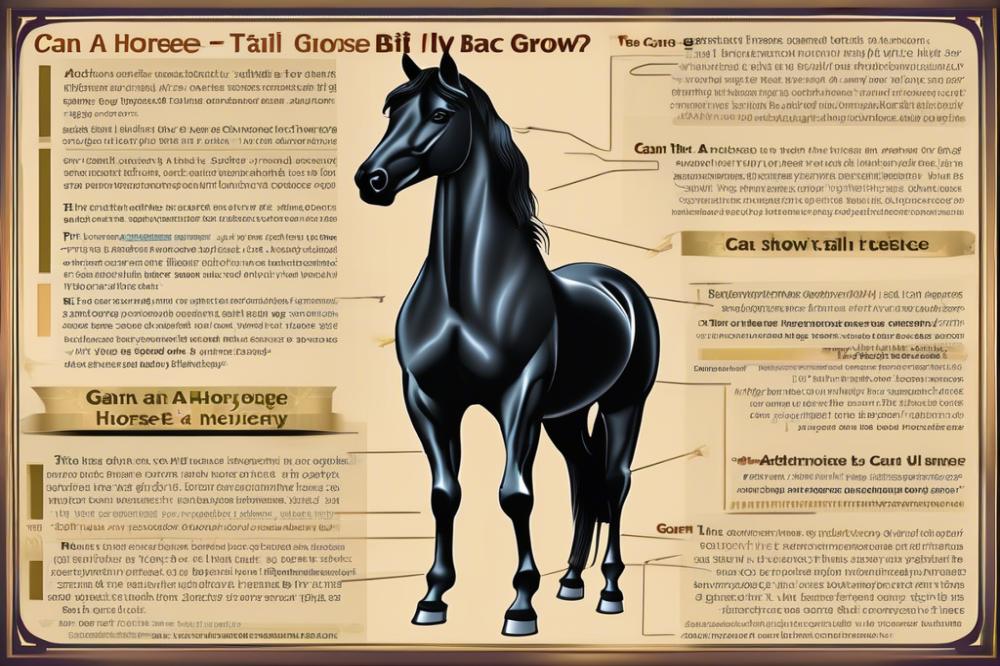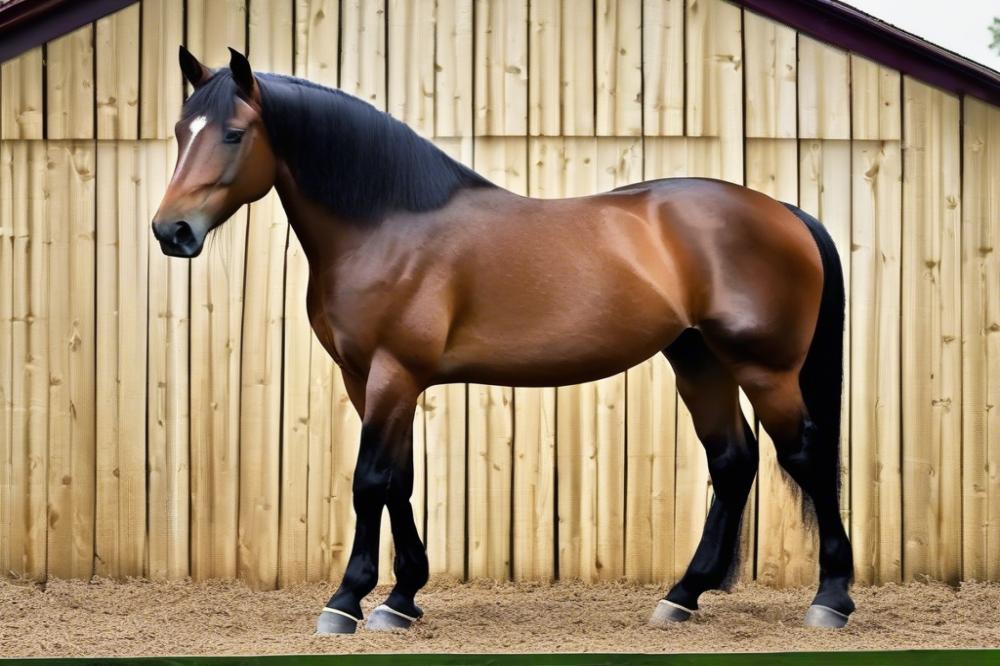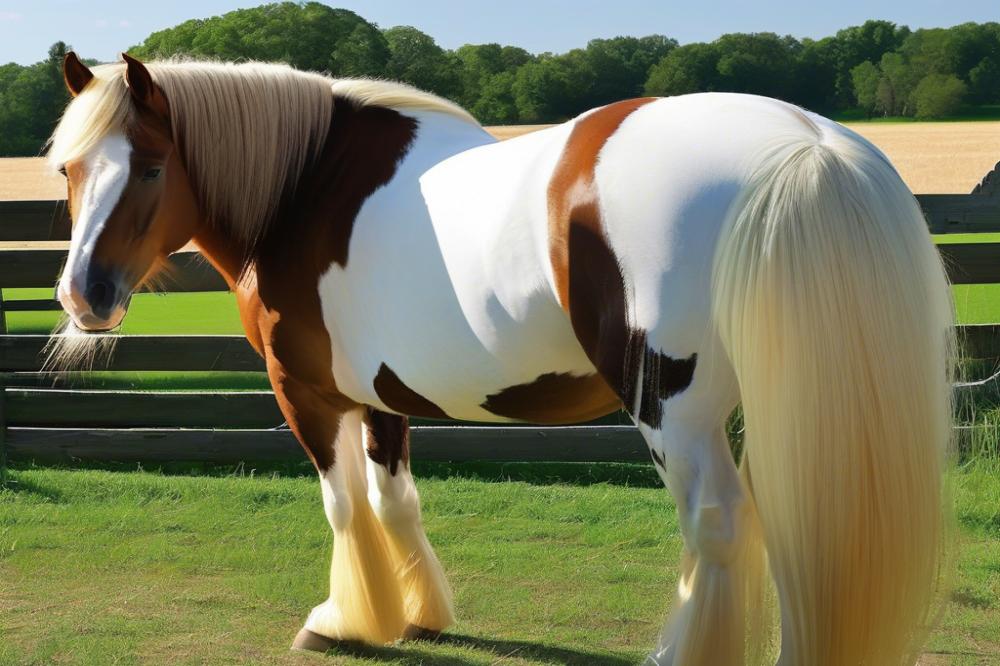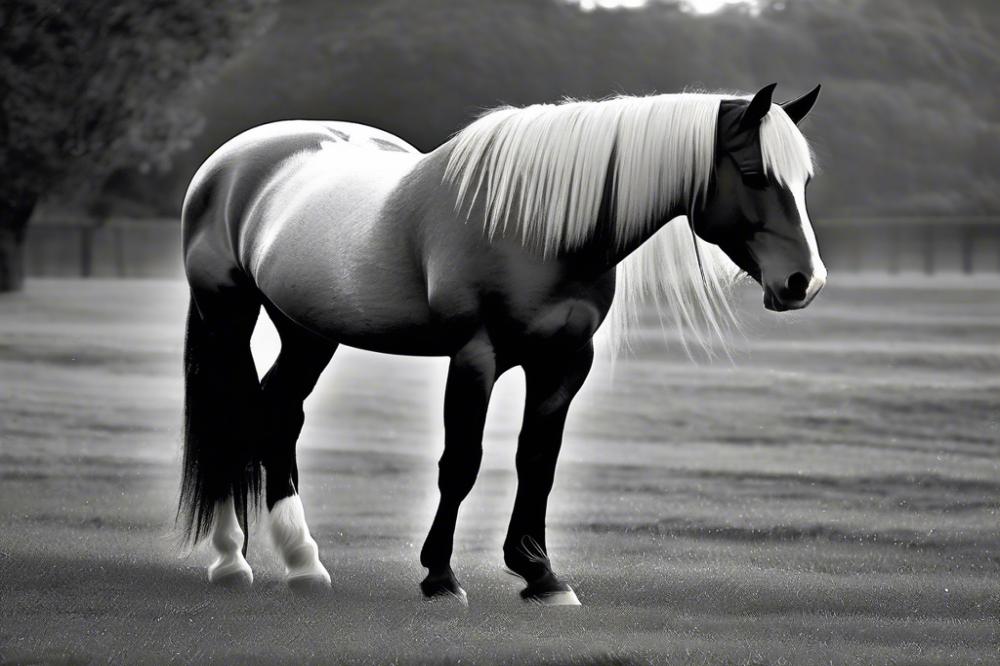Understanding the Significance of Horse Tails
Have you ever observed how a horse’s tail swishes gently in the breeze, acting like a natural fly swatter? Tails play a crucial role in a horse’s overall well-being. For many horse enthusiasts, these appendages are not just for show; they’re vital for horse grooming and emphasize the beauty of our equine friends. The tail can communicate emotions, help with balance, and even serve as a protective barrier from pesky insects. If you’ve ever seen an appaloosa mustang, you know just how stunning a well-maintained tail can be!
Can Tails Really Regrow?

Now, let’s get to the heart of the matter: can a horse’s tail grow back after an injury? Tail health is often overlooked in horse care, but it’s an important aspect of equine anatomy. Imagine a horse that has suffered an unfortunate injury—perhaps a mischievous barn door caught the tail just right. It’s a tough situation not only for the horse but also for its owner, who may worry about the horse’s recovery and return to normalcy.
What We’ll Explore Here

This article aims to delve into the fascinating world of horse tail regrowth. You might be relieved to know that, in many cases, tails can grow back. Yet, there are factors to consider, such as the extent of the injury and how well the horse heals overall. For those passionate about helping their horses recover, understanding these aspects can significantly impact their horse’s journey through recovery.
Together, we’ll unpack some insights about horse grooming and the ways to promote healthy tail regrowth. You’ll also discover how to enhance your horse’s life after an injury and possibly even how to incorporate grooming practices during big American horse races. So, saddle up and let’s get started on this informative ride!
Understanding Horse Tails

Anatomy of a Horse Tail
The tail of a horse is more than just a long bunch of hair. It’s formed from bones, muscles, and skin. The bones at the base are called “vertebrae,” which help give the tail its flexibility. These vertebrae are connected by tough tissues, allowing the tail to move with ease. The hair grows from these structures, creating that flowing mane we admire. Tails can be thick and bushy or long and slender. Each horse has its unique tail style based on breed and genetics.
Functions of the Tail in Horses
Tails serve several important purposes for our equine friends. They help horses swat away pesky flies and bugs that can be a real nuisance in warm weather. This action keeps the horse comfortable. The tail also plays a role in communication. Horses use it to express their feelings. A tail held high might mean excitement, while a low one can indicate stress. In the wild, tails can also act as a balance tool when a horse runs fast. So, believe it or not, the tail is vital for both comfort and communication.
Common Reasons Why Tails May Be Lost or Damaged
Horse tails may suffer from different types of injuries. Sometimes, accidents happen. A horse might get its tail caught in a gate or tangled in fencing. Equine tail injury can also occur from rough play with other horses. Additionally, certain health issues can lead to hair loss. Conditions affecting tail health include infections or skin irritations. Poor grooming can also have a negative impact. Regular horse grooming and proper care can prevent many problems. If a horse has a damaged or lost tail, it may take time and effort for horse injury recovery. The good news is that many tails can grow back over time with the right care.
Factors Affecting Tail Regrowth
Age and Health of the Horse
When it comes to a horse’s ability to grow back its tail, age plays a big role. Younger horses usually bounce back more quickly than older ones. Think of it like humans; a teenager heals faster than grandma after a scrape. A horse’s overall health also matters. A strong, healthy equine is more likely to have a fuller tail than a horse who struggles with illness. If a horse has had a recent bout with colic or another serious condition, its energy and resources may be focused on recovery, leaving little room for hair growth.
Type of Injury or Loss
Not every equine tail injury is the same. If a horse loses its tail due to an accident, the regrowth depends on how much hair was actually lost. A clean cut may allow for faster regrowth, while a more severe injury could lead to complications. Diseases that affect hair follicles can be tricky too. For instance, skin infections or certain parasites can hinder tail health significantly. Each type of injury has unique impacts on regrowth, so understanding the cause is crucial.
Nutritional Factors Impacting Hair Growth
Did you know that what a horse eats can affect its tail? Nutrition plays a vital role in hair growth. A diet rich in vitamins, minerals, and proteins can help promote lush, healthy hair. Think about it: if you were munching on junk food all day, your hair wouldn’t shine either! Supplements like biotin and omega fatty acids can contribute positively, too. Horse care that includes a balanced diet supports not just tail health but overall well-being. So, keep that feed bucket full of quality grub!
The Regrowth Process
Phases of Hair Growth in Horses
When a horse suffers from an equine tail injury, the hair growth process begins. First, there’s the shedding stage. Old hair will fall out, making way for new. After this, the body enters a growth phase. During this time, hair follicles become active and start producing new hair. Interestingly, the hair that comes back may have a different texture or color, making it almost a surprise party for tail health. Lastly, there’s the resting phase. This period is when the hair stabilizes and matures. It can be a long wait, but it’s essential for full recovery.
Average Time Frame for Regrowth
When a horse’s tail gets injured, owners often wonder how long it will take for hair to grow back. On average, it might take several months. Generally, you can expect initial signs of growth in about three to four weeks. After that, a full recovery may take anywhere from six months to a year. Of course, each horse is different. Factors like age, diet, and overall health play a big role in tail hair regrowth. Proper horse care can speed up the process. Fantastic nutrition makes a huge difference. Good grooming can do wonders too.
Signs of Regrowth and Healthy Hair
Noticing new hair growth is exciting. Look for small tufts starting to push through the skin. Fresh hair may appear softer and lighter in color at first. As it matures, it should match the existing hair. A healthy tail looks shiny and strong. Some signs of trouble could include brittleness or unusual texture. Pay attention to what the horse’s tail feels like. Regular brushing not only helps with looks but also encourages the growth of strong, healthy hair. A good grooming routine keeps everything in check and helps with recovery.
Taking care of a horse’s injury is more than just waiting around. Engaging in horse grooming requires observation and some patience. After all, watching a horse get better can be quite a rewarding experience, especially when their tail is once again flowing in the wind.
Common Tail Issues and Their Solutions
Tail Rubbing and Its Effects on Growth
Tail rubbing can be quite the headache for both horses and their owners. When a horse rubs its tail against fences, trees, or even stalls, it can lead to hair loss and damage. This behavior often stems from a skin irritation or allergies. If a horse is not comfortable, that tail might take a beating. Sadly, a constant rub can inhibit healthy regrowth. The sensitive skin underneath may become raw and lead to infections. It’s important to identify and address the underlying causes quickly. Ignoring this issue can leave you with more trouble down the line.
Treatments for Damaged Tails
If a horse sustains an equine tail injury, prompt action is crucial. Start with a good examination. Look for abrasions or signs of infection. A vet may suggest topical ointments to soothe the affected area. These can aid in healing and prevent further irritation. Sometimes, trimming the damaged hair can help the new growth come in stronger. Remember, the condition of a horse’s tail often reflects its overall health. Regular grooming and cleaning can also make a world of difference. Keeping the tail free of dirt and debris helps in recovery.
Prevention Methods to Protect Hair from Loss
Taking care of a horse’s tail is not just about fixing problems; it’s also about preventing them. Regular horse grooming is essential. Keeping the tail clean and untangled doesn’t just look good; it helps maintain tail health. You might want to consider using tail wraps during turnout times when rubbing might happen. These can act as a shield against damage and irritants. Additionally, being mindful of diet plays a role in equine anatomy and hair quality. A balanced diet rich in vitamins can promote lustrous hair growth. Pay attention to any environmental factors that might cause stress for your horse. Addressing these issues can go a long way in keeping that tail looking fine and dandy.
When to Seek Professional Help
Identifying Serious Issues Related to Tail Loss
Not all tail loss is created equal. If your horse is suddenly losing hair or has noticeable bald patches, something more serious may be afoot. Could it be a sign of an underlying problem? For instance, parasites or skin infections can cause distress. Look for signs such as excessive itching or inflamed skin. Watchful eyes help catch issues early.
Horses rely on their tails for balance and protection against pests. A well-groomed tail is more than just a pretty sight. It’s crucial for their overall well-being. Neglect or injury can lead to complicated situations. Equine tail injuries can sometimes mean more than just a bad day; they could hint at chronic health problems needing attention. If the tail appears to be getting thinner, don’t wait too long to act.
Veterinarian Advice on Chronic Conditions
When you notice chronic issues with a horse’s tail, it’s wise to consult a vet. Your equine’s tail health plays a huge role in their happiness and comfort. Vets can offer insights that might not be obvious to the casual observer. If a horse is continually struggling with tail loss, they may be facing an ongoing condition. Your vet can diagnose skin issues, infections, or conditions like sweet itch that can threaten tail growth.
Picture this: you wouldn’t ignore a consistent itch on your skin, right? Horses feel the same way! Regular check-ups allow you to stay ahead of potential problems. Don’t be shy about asking questions. Your veterinarian is there to help with any doubts you have.
Importance of Addressing the Root Cause
Tackling the root cause is key for any horse injury recovery strategy. Why is the tail behaving poorly? Is it a grooming issue, a health concern, or perhaps stress? Identifying the source can lead you down the right path. Sometimes, easier solutions exist than you might think.
Neglecting the underlying factors won’t do anyone any favors. Regular grooming plays a big part in tail maintenance. Investing time in horse care can prevent small issues from snowballing into large problems. Remember, a healthy tail is part and parcel of a healthy horse. Focus on holistic approaches to horse care for the best outcome.
Don’t forget that humor can lighten tough situations. Just think of that old saying: “When it rains, it pours.” When your horse’s tail has issues, it can feel overwhelming, much like a barn door swinging in a storm. So don’t hesitate to reach out for help when needed. A little professional guidance can make all the difference in ensuring a happy, tail-flipping horse!
Care Tips for Promoting Tail Health
Grooming Practices for Strong Tails
Grooming is key to a healthy tail. Regular brushing helps prevent tangles and removes dirt. Using a wide-toothed comb is best for getting through those knots. Remember, be gentle! Pulling too hard can cause more damage than good. A good rule of thumb is to brush from the bottom up. This way, you are less likely to break the hair. Additionally, consider using a soft-bristled brush for that final polish. It makes the tail shine like a star on a clear night!
Recommended Products for Tail Care
Not all grooming products are created equal. Look for high-quality conditioners or detanglers that suit your horse’s specific needs. Some products are meant to moisturize and strengthen the hair. Others can help prevent breakage. Horses with an equine tail injury may need special care. Using a leave-in conditioner can provide extra nourishment. You might also want to consider anti-static sprays. These help keep the tail looking neat and tidy. Brands that focus on horse care usually have a great selection for tail health. Don’t hesitate to ask your local tack shop for recommendations!
Dietary Suggestions for Optimal Hair Growth
What goes into your horse is just as important as what goes on top! Feeding your horse a balanced diet is crucial for overall health. Consider adding essential fatty acids to promote healthy hair. Flaxseed or fish oil can be excellent choices. Protein is another important component. Ensure your horse gets enough protein to support hair growth and repair. A supplement that contains biotin may also help. This vitamin supports strong hair and hooves. Remember that changes in diet should be gradual. Patience is key. Just like waiting for the grass to grow, good things take time. Healthy tails start from the inside out!
Final Thoughts on Horse Tail Health
It’s clear that a horse’s tail can face many challenges, but it’s also capable of some remarkable regrowth. Whether from injury, disease, or just the effects of daily life, many tails can bounce back to their former glory. Remember, patience is key here. Sometimes, it can take months for a horse tail to show signs of regrowth, and keeping a watchful eye during this period is crucial.
As a horse owner, it’s important to monitor your equine friend’s tail health regularly. Watch for signs of irritation or damage. You wouldn’t ignore it if your friend had a bad hair day, right? Keeping the tail clean and free from tangles, along with regular grooming, helps in maintaining overall tail condition. Plus, who doesn’t enjoy a little bonding while brushing? It’s a win-win!
Horse care doesn’t stop at feeding and stabling; it extends to their grooming routines, tail health, and even the less glamorous topics like horse ear plaque. Maintaining a clean and well-kept tail can prevent distractions for your horse and contribute positively to its mood and behavior.
In the grand scheme of things, just like wondering, “do mules reproduce?”, caring for your horse’s tail might seem like a small detail. Nonetheless, much like those curious facts about animals, the little things can mean a lot in the world of equine care. It’s part of the love we show these magnificent creatures. So, let’s keep those tails flowing and healthy, making sure they have every opportunity to shine beautifully in the fields!



